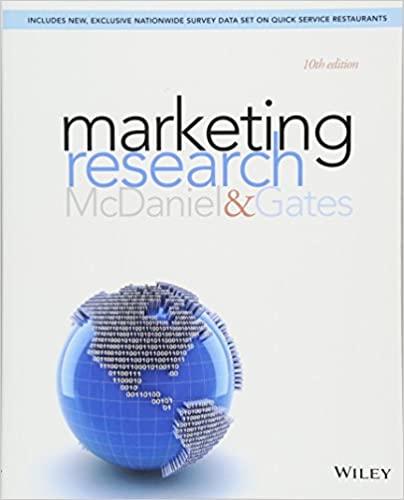ANOVA, or the analysis of variance, is a statistical test devised in the 1920s by the English
Question:
ANOVA, or the analysis of variance, is a statistical test devised in the 1920s by the English statistician, Ronald A. Fisher. British microbiologists Richard Armstrong and Anthony Hilton, both at Aston University in Birmingham, England, have found it to be the “most appropriate method” for statistical analysis of complex data sets—in this case coins collected from a butcher’s shop, news agent’s office, and a sandwich shop.
The researchers took four coins randomly from each premise and analyzed them for bacterial populations. Armstrong and Hilton described their procedure as a one-way ANOVA with four replications performed in a randomized test design. The procedure took into account the variation between the various observations and partitioned these variations into portions correlated with the differences they found between the three shops and even the variation among the four coins collected in each shop. Even so, this was a single-factor ANOVA experiment, the only variable being the shop.
They next performed a factorial experiment, studying several factors at once, namely, the influence of the type of dishcloth (cloth or sponge) and the prior rinsing of the material on the quantity of bacteria transferred to a food preparation surface as well as interactions between the two variables. Then they performed an even more factorially complex ANOVA study to determine how well two strains of bacteria survived on inoculated pound notes measured at 10 time intervals. The ANOVA method enabled them to discern a subtle pattern of three-factor interactions among the variables (such as the slight interaction between surface type and bacterial strain), the decline of bacterial numbers over time in variance with the type of surface, and the decline of one bacterial strain in numbers faster than the other in the same circumstance.
Each of these investigations yielded a data-rich ANOVA table, information that health inspectors surely would find practical and immediately useful. The researchers had high praise for the ANOVA technique, calling it a “powerful method of investigation” for applied microbiology because it could highlight the effect of single factors as well as their interaction. Even better, combining different factors in one study is efficient and often reduces the number of replications needed.
Questions
1. Can you devise a four-factor ANOVA test for the microbiologists?
2. The microbiologists applied their different ANOVA tests to food-service-related shops. How might it be applied to a dentist’s office?
Step by Step Answer:






